What is Movement Analysis?
It is measuring how much and how the body moves. To fully understand how the body is performing we need to know angles and forces.
We know that muscles go across joints and when muscles contract the joint moves.
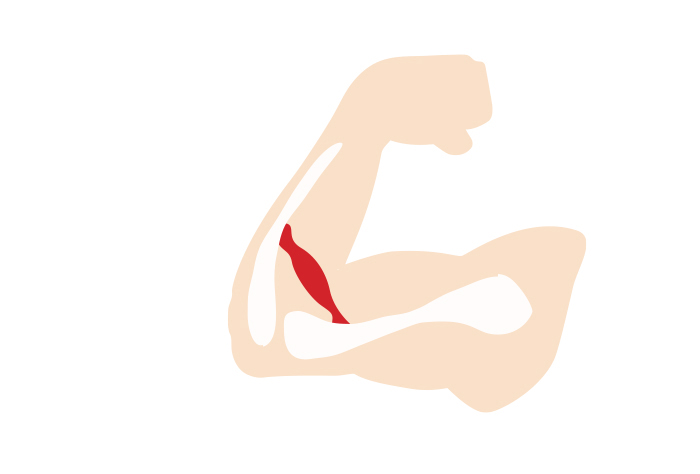
If we put a protractor across the joint we can measure a joint angle, and this is a way of describing our posture, or the shape of our body.
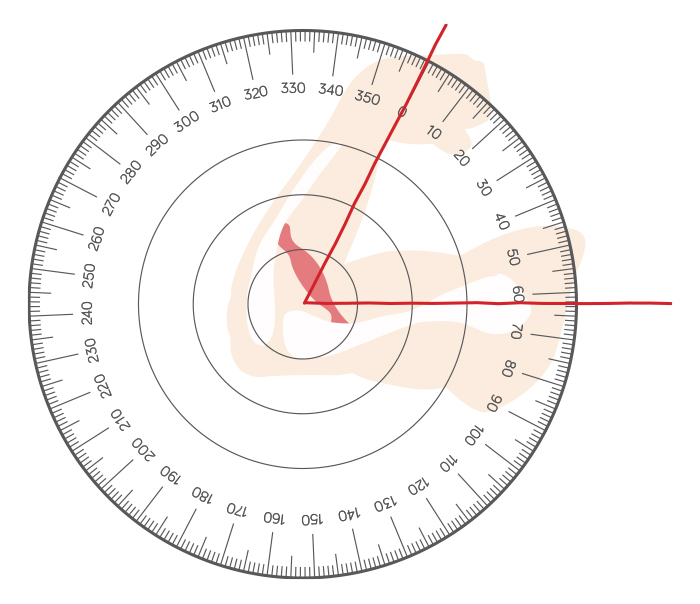
What if we were to take lots of protractor readings as the joint moves; we could know the angle / posture at any point in the movement. These produce graphs we can use to understand healthy and unhealthy movements.
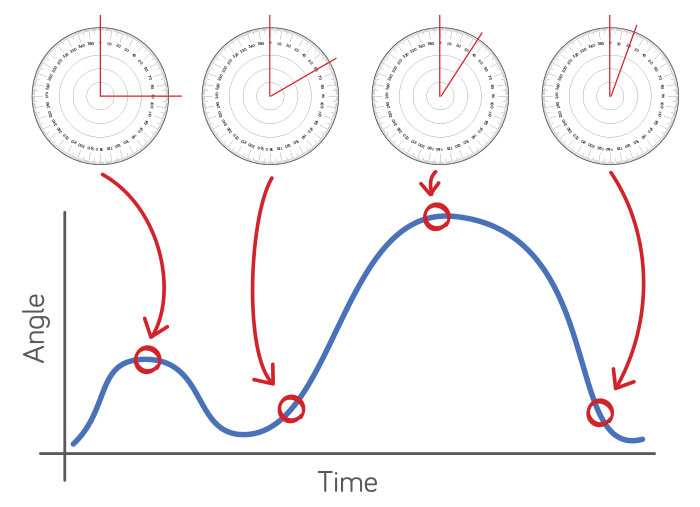
Here is an example of an actual joint angle graph, in this case for a knee.
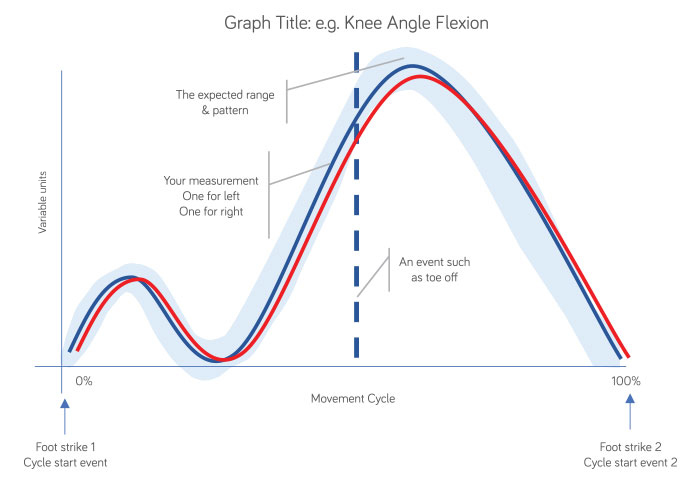
Joints don’t only move in one direction they can flex, extend and rotate. This means that to understand the movement completely we need to use our protractor in in 3 dimensions.
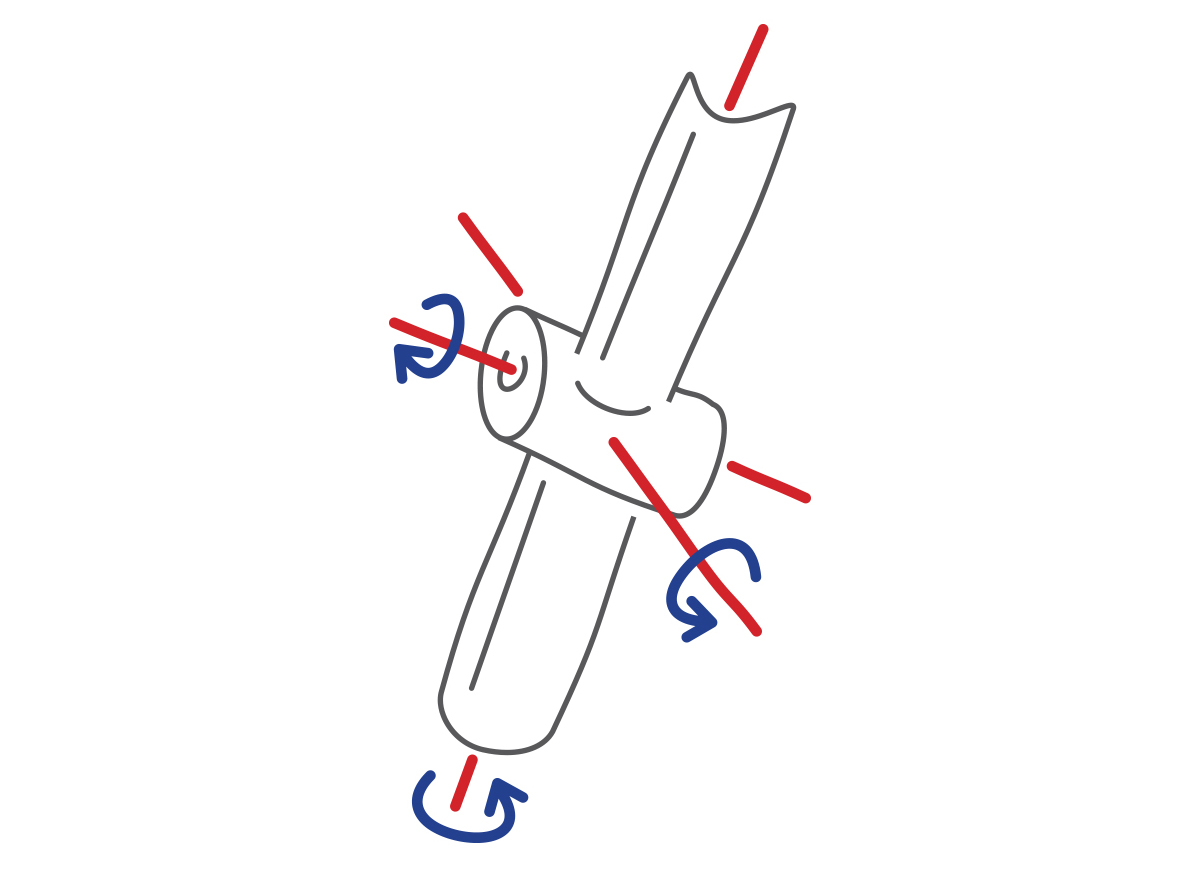
We use a very precise motion capture system to measure the position of the body and the forces acting on it, hundreds of times a second.
There are lots of ways to measure movements but by far the best and most accurate is to “model” the body. How do we do that?
Take a block of wood. It can’t bend, stretch or squash (well not very much anyway).
If we draw three lines through three points on this block of wood we can describe three ways to rotate it. As the points always stay the same distance from each other, since the wood does not stretch, we can always know where the block is and how it’s rotated based on these three points, or markers.
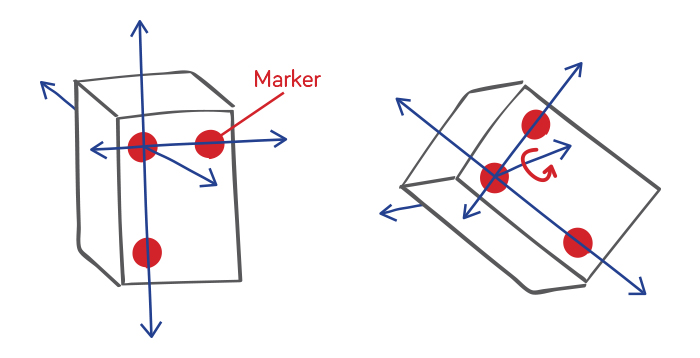
Now we can orient this block of wood wherever we like by rotating it around these three lines. If we put two blocks of wood together, we can easily measure the angle between them by looking at the lines and the angles between them.
These blocks of wood could just as easily be parts of the leg or arm and we can mark the points by placing small markers on the body and tracking them using precise motion capture cameras. We can work out the joint angles by looking at the lines just as before with our blocks of wood.
This is biomechanical modelling.
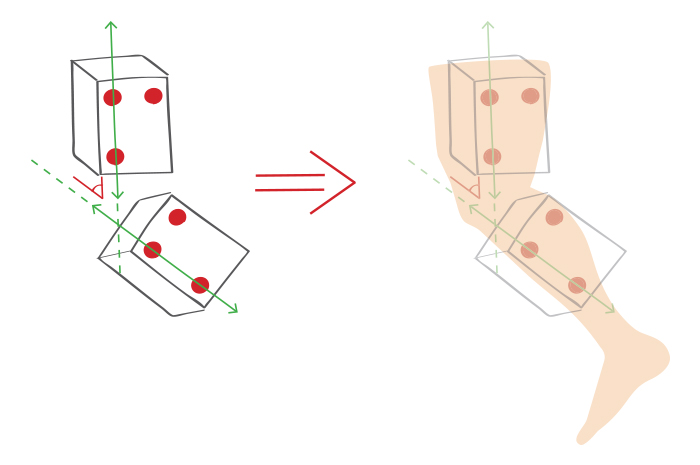
Now, the important thing about muscles is that they produce pulling forces. They produce forces to create torques, or turning forces, about a joint, just like the force needed to tighten or loosen a nut with a spanner. The amount of turning force depends on how much force is applied and how far away it is to the centre of the joint.
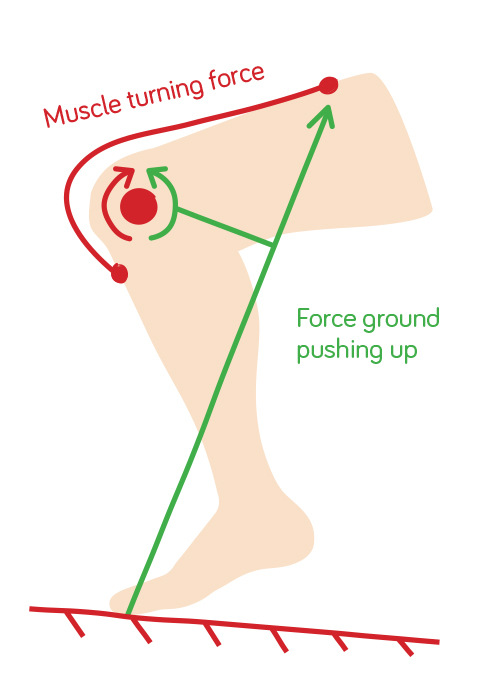
In movement analysis we use sensors in the floor to measure the amount of force. And since we are tracking the position of the joint with our markers placed on the body, we have all the information we need to calculate what the muscles are having to do to perform a specific movement. This is called kinetics and we can plot the changes in forces during movement just as we did with the joint angles. Again, it’s important to remember that the forces act in 3 dimensions and, unlike many other techniques, our measurements capture all of them.
Here is what the forces look like in a graph of someone walking.
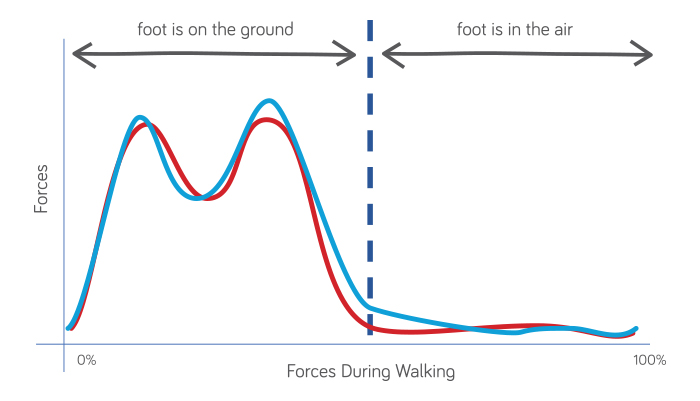
AI pattern recognition with Joint Analytics
Our AI movement analysis services, such as RadACL, have been designed to detect subtle changes in the patterns of the forces and joint angles.
This analysis informs you whether a particular movement is healthy or unhealthy, whether it is likely to cause harm in the long run or if its improving with treatment or therapy.